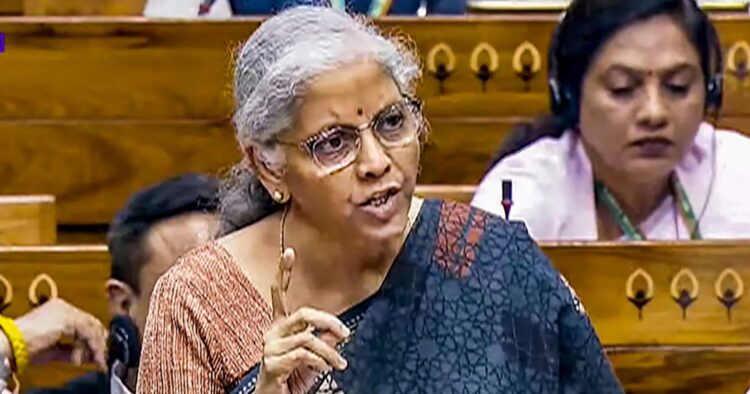On Monday, July 22, Union Finance Minister Nirmala Sitharaman presented the Economic Survey for the year 2023-24 in Parliament. The survey highlighted the impressive resilience of the Indian economy despite facing global challenges. Here are the key points discussed in the survey:
India’s real GDP grew by 8.2% in the financial year 2024 (FY24), marking the third consecutive year of growth above 7%. This growth was driven by stable consumption demand and improving investment demand. Gross Value Added (GVA) at 2011-12 prices grew by 7.2% in FY24. The current account deficit (CAD) improved to 0.7% of GDP, down from 2.0% in the previous year.
By the end of March 2024, India’s foreign exchange reserves were enough to cover more than ten months of projected imports for FY25 and 98% of its external debt. The general government’s fiscal balance has improved thanks to better tax compliance, expenditure control, and digitization.
Stable Banking Sector
The banking and financial sectors performed strongly in FY24. There was double-digit growth in bank credit, and the levels of non-performing assets (bad loans) were at multi-year lows. The primary capital markets helped in capital formation, with capital markets contributing ₹10.9 lakh crore during FY24. The Indian stock market saw significant growth, making it one of the top five in the world in terms of market capitalization to GDP ratio.
Retail inflation was kept at 5.4%, the lowest since the pandemic, due to government policies and measures by the Reserve Bank of India. Core inflation, excluding food and fuel prices, fell significantly. However, food inflation remained a concern, rising from 6.6% in FY23 to 7.5% in FY24 due to extreme weather and crop damage.
Positive Outlook on Inflation
The survey predicts a positive short-term outlook for inflation, expecting it to fall due to a normal monsoon and stable global conditions. The Reserve Bank of India projects inflation to be 4.5% in FY25 and 4.1% in FY26, assuming no major external shocks.
The survey emphasizes a new approach to India’s growth, focusing on bottom-up reforms and strengthening governance. Key areas include job and skill creation, boosting private investment, supporting the agriculture sector, addressing challenges faced by small and medium enterprises (MSMEs), managing the green transition, and improving health and education systems.
Slowing FDI Inflows
Foreign Direct Investment (FDI) inflows slowed down in the last financial year. Net FDI inflows to India declined from $42 billion in FY23 to $26.5 billion in FY24. However, gross FDI inflows remained stable, just under $71 billion in FY24.
India’s energy needs are expected to grow significantly by 2047. The country has made remarkable progress in renewable energy and reducing carbon emissions. As of May 2024, 45.4% of the installed electricity generation capacity came from non-fossil sources. The emission intensity of GDP has reduced by 33% from 2005 levels.
Focus on Skill Development and Employment
The survey highlights improvements in labor market indicators, with the unemployment rate declining to 3.2% in 2022-23. The number of candidates undergoing skill development through government programs has increased, emphasizing the importance of ‘Skill India’.
The agriculture sector grew at an average annual rate of 4.18% over the last five years. The industrial sector grew by 9.5% in FY24, with manufacturing and construction sectors showing near double-digit growth. The services sector remains a major contributor to India’s economy, accounting for about 55% of the total economic size in FY24.
Addressing Mental Health Issues
For the first time, the survey highlighted the rise in mental health issues in India. It called for a shift towards a community-based approach to address mental health problems. The survey cited data showing a significant treatment gap for mental disorders and emphasized the need for better awareness and policy implementation.
Overall, the Economic Survey 2023-24 presents a positive outlook for India’s economy while also identifying areas that need attention to sustain and accelerate growth.

















Comments